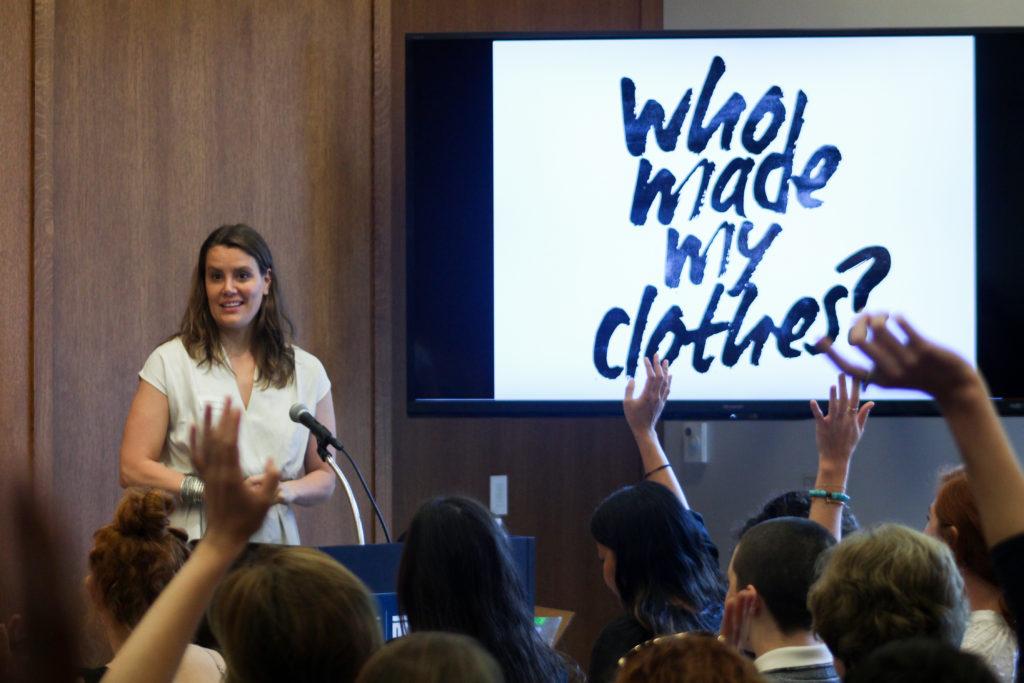Sustainability experts, fashion designers and academics gathered at the Textile Museum to discuss ecological issues in fashion Saturday.
At the inaugural “Unveiling Fashion: Conversations About Fashion and Sustainability” conference, speakers addressed poor working conditions in the industry, big brands that create waste, companies that introduce sustainable and ethical practices and consumers who have the purchasing power to spark change.
D.C. Sustainable Fashion Collective, an organization that hopes to educate the industry and consumers of ethical practices in fashion, hosted the event.
Whitney Bauck, the assistant editor at Fashionista.com, set the tone for the days’ panelists by introducing the state of fashion today. The fashion industry has committed environmental abuses, but ethical fashion is becoming mainstream with the help of publications like Marie Claire and Vogue, she said.
“Fashion, as much as it’s contributed to some really nasty, huge issues, can also be apart of the global solutions to threats facing human rights and the environment,” Bauck said.
#WhoMadeMyClothes
Lauren Fay, executive director at Fashion Revolution USA, spoke about the poor conditions of manufacturing workers. Her #WhoMadeMyClothes campaign came about after the Rana Plaza tragedy, a 2013 Bangladesh building collapse that resulted in more than 1,000 garment factory worker deaths and approximately 2,500 injuries.
The purpose of #WhoMadeMyClothes is to increase transparency in the fashion industry, encouraging consumers to look at their clothing labels and pressure companies to share details about production.
Fay emphasized the importance of ingraining a sustainable mindset at a young age. Her organization has created programs for elementary, middle and high schoolers, she said, including an upcycling program and a student ambassador group to make them more conscious about the life cycle of their clothing.
She said individual responsibility is a key step to creating a more sustainable fashion industry.
“We all have the potential to move the needle,” Fay said, “We’re all here, we all need to be active and we all need to also be aware of our individual impact.”
Economics of fashion
The first panel, called “The Economics of Fashion,” focused on unfair wages and forced labor. Pietra Rivoli, vice dean and professor at Georgetown University’s McDonough School of Business, highlighted the incentives for businesses to increase wages. She said that through wage increases, companies will become more invested in workers’ skills development.
“If you pay workers more, they sometimes become a more profitable investment,” she said.
Sabine Hertveldt, who leads the IFC Better Work program, said businesses have very slim margins so the market is hesitant to raise wages. Businesses would need to increase prices on products to increase worker’s income, but price hikes aren’t practical for everyone, she said.
“It ultimately comes down to consumers, to pay more for clothes,” she said. “Some of us are able to make the choice to pay more, but there’s also a lot of people, low-income people, who are not able to afford it. There’s not an easy answer or an easy fix.”
The consumer trap
The second panel “The Consumer Trap” focused on over-consumption in the United States. Marisa Adler, a senior consultant at Resource Recycling Solutions, said since the rise of fast fashion in the last decade, the complete flow of waste grew 6 percent, while textile trash increased 71 percent in total and 50 percent per capita, citing an EPA statistic. She said 80 to 85 percent of textile waste goes straight to a landfill.
Kaveri Marathe, founder and CEO of Textiles, a company that recycles clothing, said large brands have the resources to completely overproduce, and they need to slow down production to minimize clothing waste.
“One of the issues of over-consumption is overproduction,” she said. “Customers are like butterflies, when they see something new they want it.”




